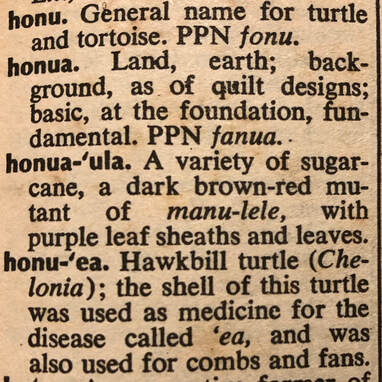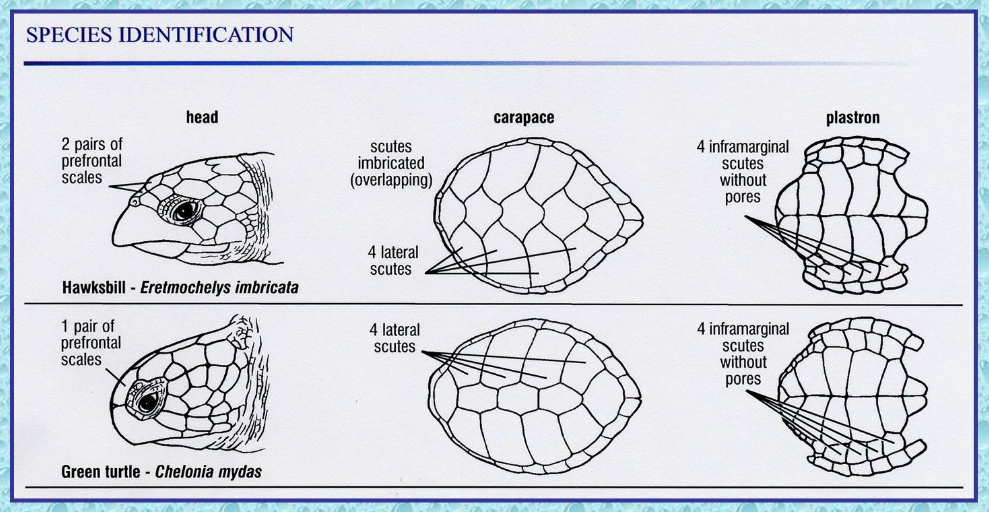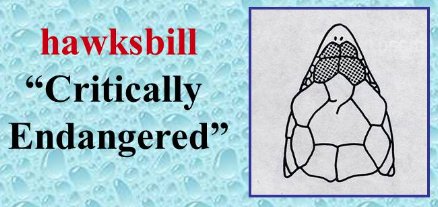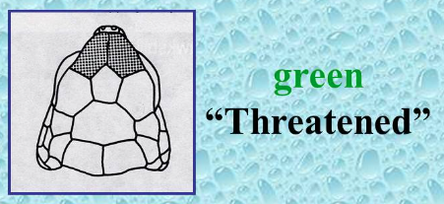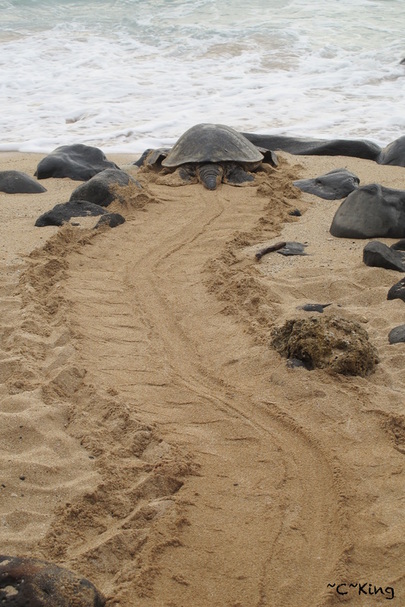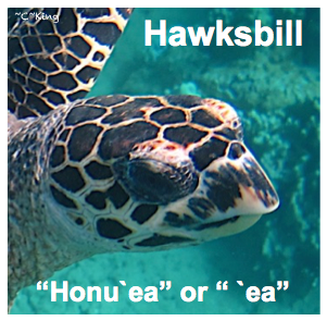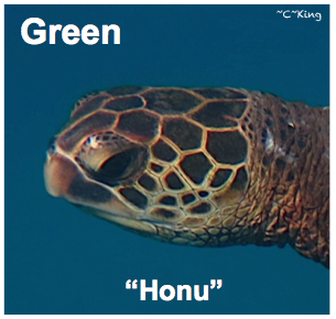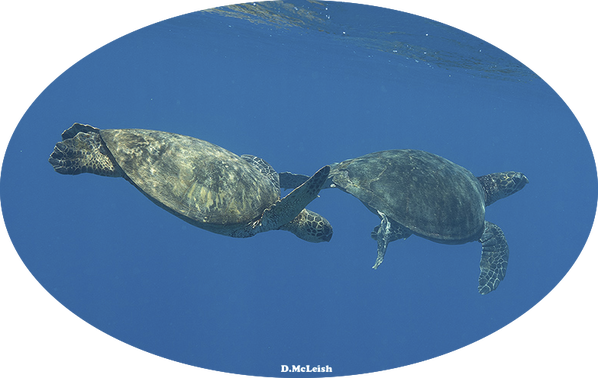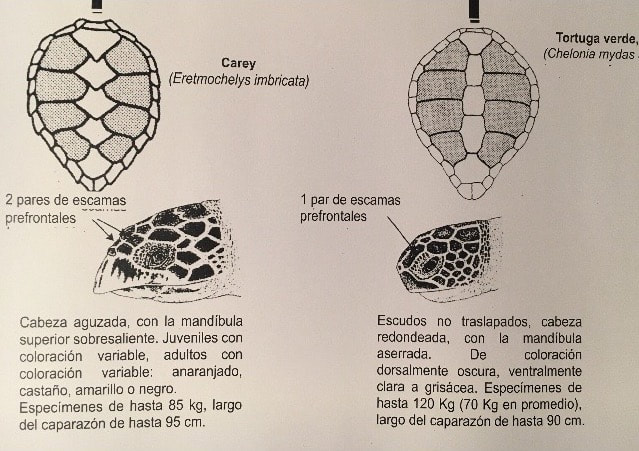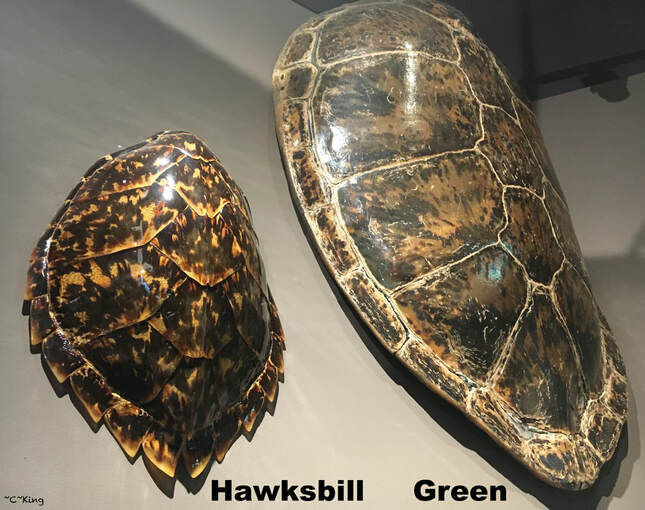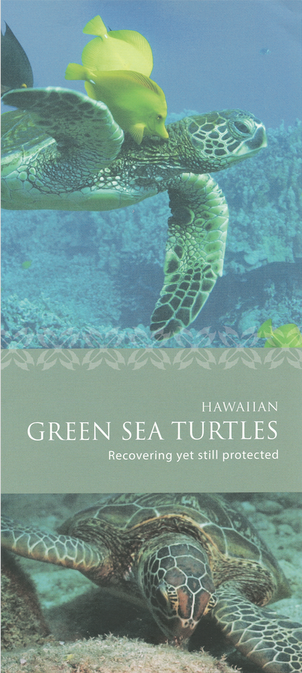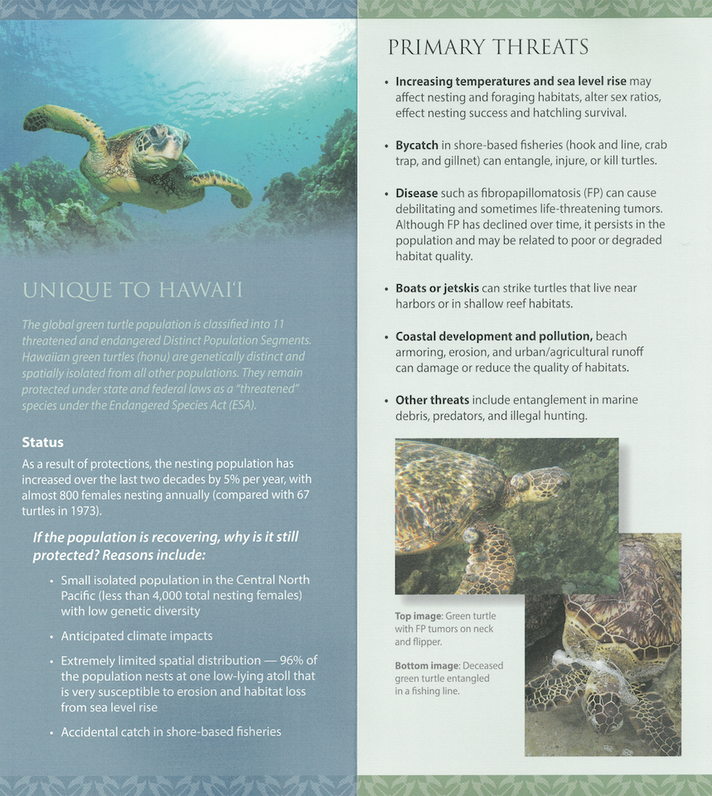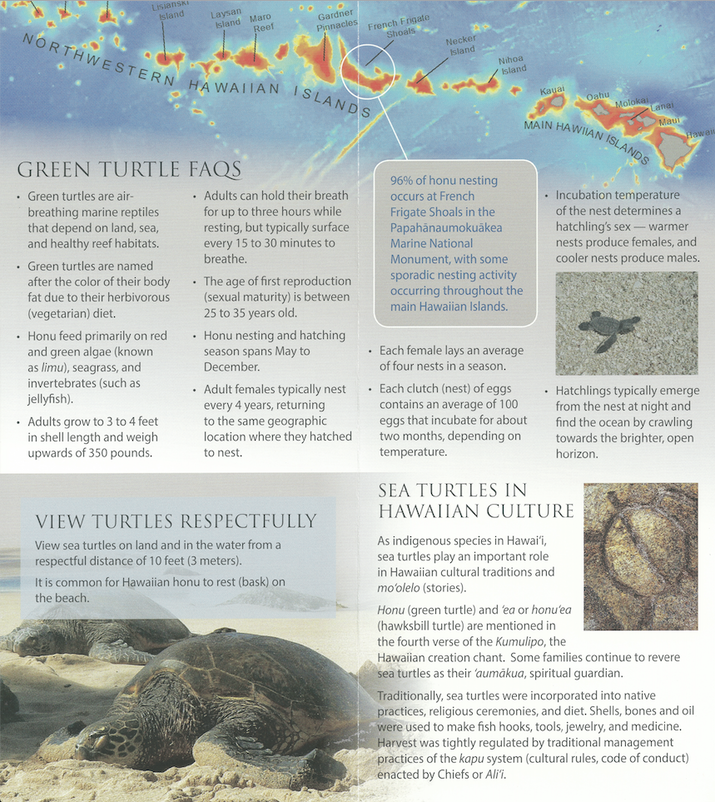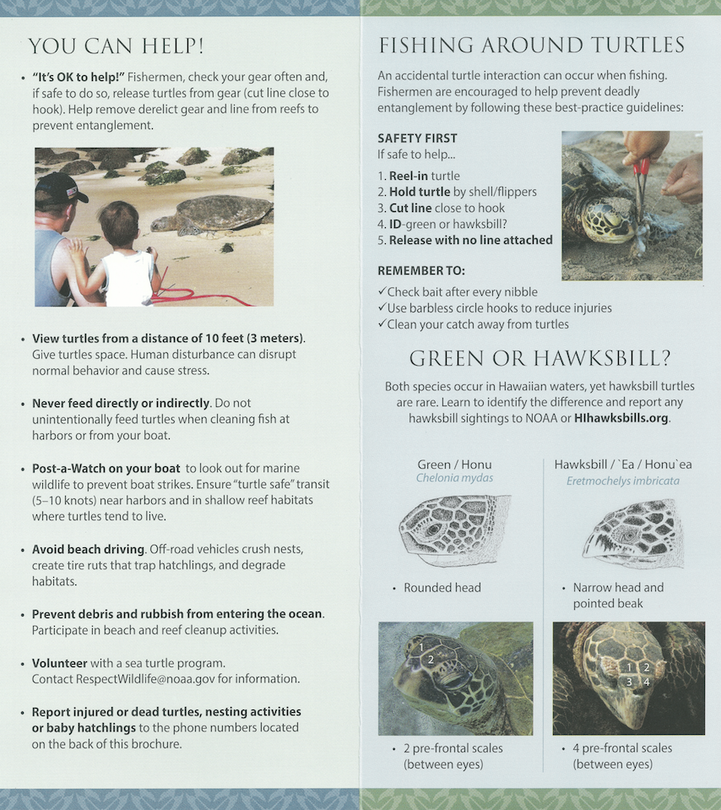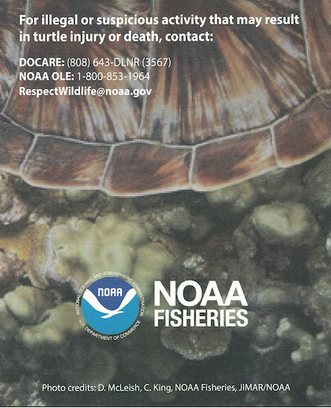Sea Turtle Fun Facts: Hawksbills Compared to Greens
Notice the differences between this green (top & left)
with #MUI100 "Emma" (bottom & right):
Hawksbills (Eretmochelys imbricata)
|
Greens (Chelonia mydas)
|
Here's a video that showcases the differences between
hawksbill and green turtle tracks:
Hawksbill and green hatchlings look very different:
They look more similar as juveniles and adults:
Here's a video about "Leftie", one of our known hawksbills, and a green sea turtle that happened to swim by. Notice the differences:
NOAA green turtle brochure (Summer 2017):
NOAA Hawaiian Sea Turtle Coloring Book
|
See pages 7 & 8 for the hawksbills!
|
| ||||||
